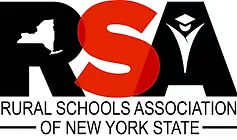
Class #2, Summary of Reading #2:
Christiaanse S., T. Haartsen. 2017. The influence of symbolic and emotional meanings of rural facilities on reactions to closure: The case of the village supermarket. Journal of Rural Studies. 54: 326-336. http://dx.doi.org/10.1016/j.jrurstud.2017.07.005
OVERVIEW
This study sought to look at issues surrounding closure of a resource in a rural area due to population decline. The thoughts we usually have about this are that closure will result in a) lack of access to that service for the people remaining in the area, and b) reduced desirability of that locale as a place to live. The authors also wondered if there were some social or symbolic reasons people would react negatively to the closing of a resource, especially when this reaction happens in places where closure does not result in the removal of access to that resource (e.g., there are other options available nearby).
In recent history, we have seen the increase of “big box” stores, and a decrease in “mom and pop” establishments for grocery stores, hardware stores, bookstores, and more. We often think about this as eliminating access to services needed by residents. However, sometimes this has resulted in reduction of choices, but not access, yet there is often still negative press coverage and protests.
So why do people react negatively? What are all the factors?
THEORY
Access – Generally we worry about closure of schools, medical facilities, and grocery stores as there are implications for limiting access to education, health care and food. In the Netherlands, no one is more than 10km (a little over 6 miles) away from any of these, and over 90% of people own a car. Still, there can be seen some fairly strong protests to the closure of a resource. Some people in outlying areas who have difficulty getting around (sick, elderly, for example) may add to protests, but does not explain it all
Livability – Closure may decrease perceptions of “livability,” or how attractive a place is to live. Studies have shown that livability is dependent on a lot of things, and while this explains some of the protests, it’s rather small. Also, there are localities without any facilities that are thought of as very livable.
Social Outlet – People in rural areas with cars will drive to further places for social opportunities, but those with low mobility (lack of car, etc) might depend on more local public spaces for socializing.
“Place attachment” describes “emotional bonds between people and places” p. 327
Social representations theory posits “5 stages of psychological response to place change:”
1. Becoming aware (perceptions)
2. Interpreting (perceptions)
3. Evaluating (positive, negative, neutral)
4. Coping (behaviors – denial, acceptance, anger, etc.
5. Acting (protest or accept) (p. 327)
These are not always tied together as one would expect. Just because there is positive place attachment, does not predict whether people will act to protest its closure. Nor does it predict that people will evaluate the change negatively.
This paper was interested in phase 3: evaluation, and “how bonds between residents and facilities influence evaluations of place change” p. 327
“Sense of place” is about the meaning one creates for a physical place, consisting of
1. Place attachment –emotional – the affection you might hold for a place (the house you grew up in, for example).
2. Place identity – tied to facts and beliefs – the extent to which place is part of your identity (e.g. “I’m from UPSTATE NY.”)
3. Place dependence – functional – the extent to which the place is incorporated into your functioning (e.g. I work at Cornell, but also take advantage of the entertainment and cultural events, recreational spaces and events, the ATM machine near my office, the campus eatery that offers healthy-ish take-out dinners, my faculty ID privileges on public transit. Being a single parent, this is beyond convenient.)
This chart (p. 328) illustrates the various individual characteristics that interact with place in different and multiple ways to create the meaning of a place.Several of these characteristics and processes were touched upon in the examples above.

PROJECT CONTEXT
The researchers specifically tried to draw out the elements of PROCESS in the above chart to help figure out why there might be negative reactions to closures.
The researchers found a somewhat remote, depopulating village, Ulrum, to study. “Population decline in Ulrum was 22% over the last 20 years, and in that period Ulrum has seen a lot of local facilities and services disappear such as the post office, two banks, police station, general practitioner, pharmacy, two primary schools, bakery, grocer, shoe store, café, restaurant, library, hardware story, clothing store and bike repair shop.” P. 329. A the time of the study, the last place to get groceries had just closed. The store also had “an ATM, pickup point for medicine, and a postal-service.” P. 329 so the loss was more than just a food resource. There was a smaller protest than expected, perhaps due to other options available that may have been on the way from work for some people and/or cheaper. Also there was a mobile food truck that would bring groceries to the outer reaches of Ulrum.
The researchers conducted a survey about a month before this grocery store closed to see how people felt about it.
FINDINGS
While there was a group of people whose access to groceries was, in fact, reduced and thus they were very negative about its closure, this was only a very small amount of the negative reactions collected in the data. In fact, the lack of access itself was not the cause of the negative reaction, nor was perceived impact on livability, nor how long someone lived in the area.
The most significant reason for negative reaction was “the general belief that a village should have a supermarket for groceries” (emphasis in original) indicating it had functional meaning (as in above chart). So this is more about an ideological perception that a community with a supermarket is faring better or functions better than a community that does not have one.
Other strong factors included personal attachment, and the supermarket as a social meeting space.
IMPLICATIONS FOR SCHOOLS
School closures and mergers are on the minds of many, especially in NY’s rural areas where resources and populations have dwindled to a point where educating students is costing more for lots of reasons, but economy of scale is a big one.
School closures and mergers are controversial and extraordinarily disruptive and difficult for many reasons, not the least of which is negative reactions from stakeholders (students, parents, teachers, other community members) even when the status quo is suffering and/or clearly not sustainable. This puzzles many.
This study helps shed some light on reasons why protests that may appear illogical: in large part, they are. However emotional attachment and community symbolism are powerful and real, and cut at the very identity of communities and individuals. Understanding this and planning for this may smooth the road. As the authors conclude, “The major challenge might not necessarily lie in restructuring facilities, but in supporting a community’s emotional process of ‘loss’.” (p.335).



